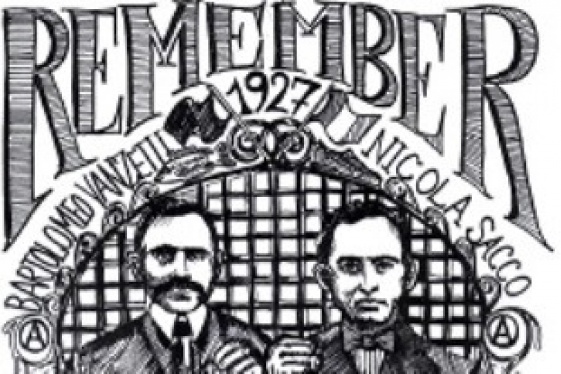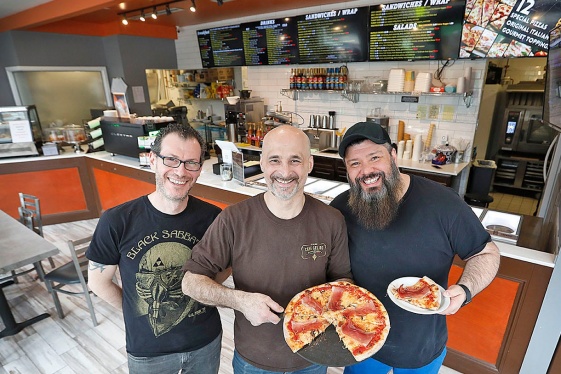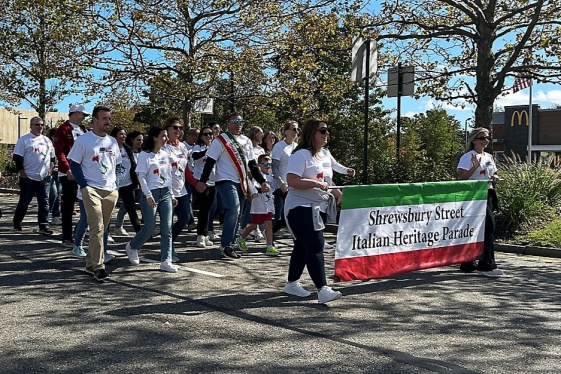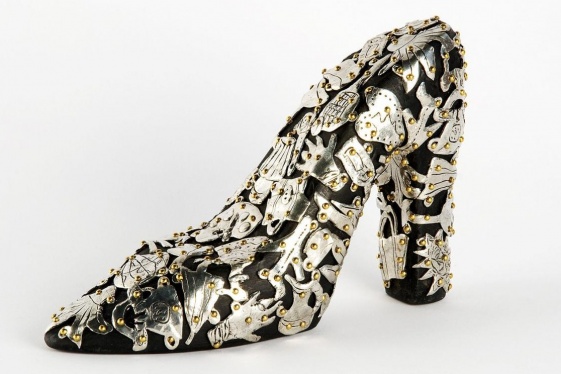
Q&A WITH SUSAN TEJADA, AUTHOR OF “IN SEARCH OF SACCO & VANZETTI”

Two Italian immigrants, Nicola Sacco and Bartolomeo Vanzetti, were arrested in May 1920 in Brockton, Massachusetts. They were charged with murdering two guards in nearby South Braintree one month earlier, and escaping with fifteen thousand dollars in payroll cash that the guards had been delivering to a shoe factory. Sacco, a skilled worker at another shoe factory, and Vanzetti, a self-employed fish peddler, went on trial a year later. They swore they were innocent, but were convicted after what is almost universally recognized today as an unfair trial. Their motions for a new trial were repeatedly turned down, and they were executed in 1927. Susan Tejada (www.susantejada.com) is a former editor for the National Geographic Society. She spent years investigating the case, sifting through police reports and studying the turbulent background of world war and domestic terrorism against which the case unfolded. In her new book, In Search of Sacco and Vanzetti, she uncovers startling and previously unreported information about the defendants, their lawyer, their executioner, and the two murder victims. PRIMO recently interviewed Tejada about the case. Here is what she had to say...
What led you to write a book about Sacco and Vanzetti?
For me, there's a strong hometown connection. Providence, Rhode Island, where I grew up, was the base of operations for the criminal gang suspected of committing the crime for which Sacco and Vanzetti were executed. And as I discovered in my research, one of the South Braintree murder victims also had family ties to Providence. Beyond that, however, I've always had a great curiosity about Nick and Bartolo as individuals, and wanted to find out what made them tick, what they were really like, behind the many myths that enshroud them.
A strength of your book is how you capture the times, the 1910s and 1920s and the anarchist and labor movements in America. Share with us how Italian immigrants were leaders of these movements.
Some important anarchists—Errico Malatesta and Pietro Gori, for example—came from Italy to the United States on relatively short speaking tours, but others remained much longer—most notably, Carlo Tresca, who arrived in 1898, and Luigi Galleani, in 1901. Tresca and Galleani would eventually become bitter rivals. They wrote and published influential Italian-language newspapers in America, widely read by their compatriots in the self-contained world of Italian-American anarchism.
Within the labor movement, Joseph Ettor was an exciting speaker and effective organizer for the Industrial Workers of the World, a militant union founded in 1905. The Brooklyn-born child of Italian immigrants, Ettor could inspire a crowd in several languages—not just English and Italian, but Polish, Hungarian, and Yiddish as well.
You bring to life the prejudices and outright bigotry back then that a host of politicians, journalists, and community leaders displayed against Italian immigrants. Share with us some of the most egregious examples of anti-Italianism in the era of Sacco and Vanzetti.
The most egregious example would have to be the largest mass lynching in American history, when eleven jailed Italians were killed in a single night in New Orleans in 1891. Five of them were awaiting trial for the murder of the city's chief of police; of the other six, three had experienced a mistrial in the same case and three had already been acquitted. Another egregious example is the 1911 report by the U.S. Immigration Commission, stating that "certain kinds of criminality are inherent in the Italian race."
Of course, Italians weren't the only immigrants who experienced bigotry. Almost 70 percent of immigrants to the United States between 1900 and 1909 came from Italy, Russia, and Austria-Hungary, and nativists viewed them all as worthless riffraff, "the lowest stratum of the Mediterranean basin and the Balkans," in the opinion of Madison Grant, the chairman of the New York Zoological Society.
Tell us a little about Nicola Sacco and Bartolomeo Vanzetti. What were they like as individuals? Did you find anything in their background that might suggest they had the acumen to become cold-blooded killers?
Let me start by emphasizing that they were complex individuals full of contradictions—like most human beings! Sacco, from southern Italy, was the third son in a very large family. He was 16 when he immigrated to America with an older brother in 1908. He became a skilled factory worker, earned a good living, married, and started a family. He was achieving the American dream yet felt compelled to support striking workers (although he himself never joined a union, and in fact was on excellent terms with his own boss). Vanzetti, from northern Italy, was the eldest son in a smaller family; he was close to one sister, but barely knew the two younger siblings who were born after his father had sent him away from home at age 13 to learn a trade. At age 20, grieving the recent death of his mother, Vanzetti resolved to come to America on his own, also in 1908. He never married. He never became a skilled worker or earned a steady paycheck. His relationship with his father was strained; the two men stopped corresponding two years into Vanzetti's seven-year imprisonment.
Vanzetti read widely in prison and kept up a large correspondence with his supporters. His English fluency was better than Sacco's. As a result, many people assumed that he was more intelligent than his co-defendant, but Vanzetti himself disagreed. "I am a better babbler than he is," Vanzetti wrote, "but many, many times...remembering his heroism I felt small small at the presence of his greatness."
Apart from Sacco's arrest in 1916 for speaking without a permit, a charge later dismissed, neither Sacco nor Vanzetti had a prior arrest record. They were kind and gentle men in their private lives, yet they did support Galleani, who condoned violence in some situations, and whose followers were the likely perpetrators of two terrifying waves of bombing in the United States in 1919. However, there is no evidence that Sacco or Vanzetti participated in bomb plots or any other acts of anarchist violence, and I think it unlikely that they ever did. In the book I also explain at some length why I think it's unlikely that that they had anything to do with the crime in South Braintree.
The convictions and deaths of Sacco and Vanzetti are met with doubt by a growing number of historians, scholars, and writers. Part of your book examines the evidence at the time of the case and what was uncovered later. If you had to choose, what key evidence or lack thereof exonerates the duo or confirms their guilt?
The only evidence ever presented to a jury was the evidence offered by the more than 150 witnesses who testified at the trial in 1921. Later, between 1921 and 1927, defense attorneys filed five motions for a new trial, based on new evidence. And since 1927, new evidence has continued to surface, most notably in 1977 when state police files were released. Out of this staggering mass of evidence, the most influential concerned the guns that Sacco and Vanzetti were carrying at the time of their arrest. (Vanzetti handled cash on his fish-selling route and owned a gun, he said, to defend himself in case of robbery. Sacco needed a gun for his night job as a factory watchman.)
The prosecution said that Vanzetti's gun had been lifted off the body of one of the murder victims, guard Alessandro Berardelli. However, no witness saw Berardelli with a gun on the day of the crime; no witness saw a bandit take a gun from Berardelli; and three witnesses testified to a completely different ownership trail for Vanzetti's gun. Police files released in 1977 imply that the prosecution knew that Vanzetti's gun was not Berardelli's, but suppressed the evidence. The prosecution also said that, of four bullets removed from Berardelli's body, the one that actually killed him, and only that one, was fired by Sacco's Colt automatic. Two years after the trial, one of the prosecution's expert witnesses recanted, swearing that there was no "affirmative evidence whatever" that the fatal bullet had come from Sacco's pistol. Six years after the trial, defense attorneys alleged that the prosecution actually tampered with the fatal bullet. This cannot be proven. If it were true, however, it would help explain the inexplicable—how it was possible that only one of the four bullets taken from Berardelli's body could have come from a Colt, even though no witness saw one bandit shoot two guns, and the only witness who claimed to have seen two bandits shoot Berardelli did not identify either Sacco or Vanzetti.
Ballistics evidence was the most important factor for at least five of the jurors in 1921. In light of later revelations, however, I believe that the ballistics evidence at the trial was deeply flawed and should not have convicted either Sacco or Vanzetti.
How did writing the book change or alter your understanding of the Italian American experience?
It made me more aware of the complexity of that experience—about the discrimination against, and exploitation of, Italians (and other ethnic groups) during the great wave of immigration from southern and eastern Europe, and about the "lost world" of Italian-American radicals, a world dominated by anarchists at the beginning of the twentieth century.
Editor's Note: You can order Susan Tejada's "In Search of Sacco & Vanzetti," by logging on to her web site www.susantejada.com. Her book is also available for sale on Amazon.com, Barnes & Noble.com and University Press of New England.com.
Primo Magazine http://www.onlineprimo.com/
You may be interested
-
9th Annual Sacco and Vanzetti March/Rally
Saturday, August 23rd, in Boston, the 87th anniversary of the execution of Nicola Sacco an...
-
Emanuele: cervello d'Italia al Mit di Boston
Si chiama Emanuele Ceccarelli lo studente del liceo Galvani di Bologna unico italiano amme...
-
Italian world language teacher 2015-2016
FRAMINGHAM PUBLIC SCHOOLS - JOB DESCRIPTION TITLE: World Language Teacher - Italian...
-
'A real Italian experience': Quincy's Italian...
Smoked prosciutto, Buffalo mozzarella, gorgonzola, mortadella, Zeppole di San Giuseppe. Al...
-
'Celebrating Italian heritage': Worcester's I...
Shrewsbury Street was transformed into little Italy Sunday afternoon as community members...
-
'Cello Bar
When life gave them lemons, the Pallini family didn't make lemonade — they made limoncello...
-
'Claudia DeMonte: A World View' Opens August...
Cape Cod Museum of Art will present an exhibition of provocative installations by artist...
-
'I took a shot.' After 35 years, North Truro...
Growing up in an Italian-American household, Robert Montano, chef-owner of Montano's Resta...










